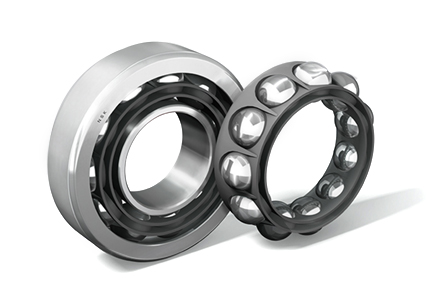Summary:When choosing bearing components, two of the most important criteria to be addressed are the diameter of the component a...
When choosing bearing components, two of the most important criteria to be addressed are the diameter of the component and the bearing cage size. The main considerations to be made when selecting bearings are as follows: whether the bearing ring is directly stationary, or if the bearing rotates at the same velocity as the wheel, and whether the bearing and wheel are parallel or not. Bearings must meet certain size and rolling radius requirements throughout all operating conditions.
Bearings with small outer radii and small inner rings have the least rolling radius and therefore provide the least angular momentum. They can also have the least effective seal, especially with radial bearings. Rotary motion imparts energy into the moving system. A bearing ring has a limited effect on this energy transfer. Small outer rings have less angular momentum than large inner rings, thus they provide more drag.
Another main purpose for which bearings are used is in the main process of turning. There are different types of grinding wheels and these are used in different processes. The main process method for grinding wheels is known as sintering. In this main process method, a workpiece is mounted on a grinding wheel with cutting edges.
When the workpiece is moved against the grinding wheel, it scrubs the surface with abrasive particles. Scrubs usually take the form of low-density abrasives or high-carbon chromium oxide chips. This is the main process method for turning and a bearing ring plays an important role in the process. The purpose of the above basic process is to give the workpiece a rough finishing polish. The rough cutting edge of the grinding wheel against the bearing ring provides a good means of polishing the workpiece. In the high-carbon chromium bearing steel rolling process, a number of passes are made over the workpiece to give the surface a very smooth finish.
The outer ring, which is often made of high-carbon chromium, is placed in a drill-like device that penetrates the workpiece on its outer surface and creates a hole. The inner ring, which may be of different composition than the outer ring, is then inserted into the first hole. This is done so that the inner ring, with a slightly thicker material, retains the same thickness throughout the drilling operation. The purpose of this is to create a first-round contact of the two rings. This process, combined with the rolling action of the drill, creates a very efficient work flow.
In addition to the above operation mentioned above, another commonly used process is known as "rolling shafting". In this operation, a continuous belt of rolling elements is slid over a fixed spindle with a gearbox. On its way, the belt pulls the gearbox up or down depending on the set level of rolling elements. The most common materials used in this type of bearing process are steel, titanium, and chromium.



